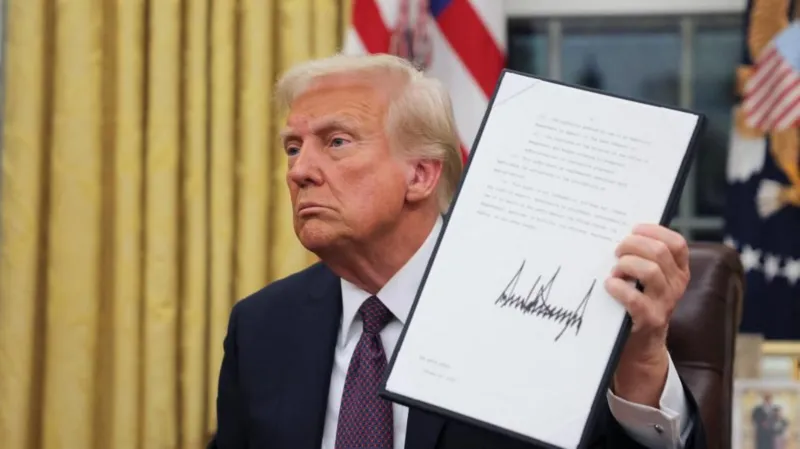The Make America Great Again (MAGA) movement, which has long championed a hardline stance on immigration, is now showing cracks in its united front over the contentious issue of foreign worker visas. Once firmly opposed to most forms of immigration, some key figures and factions within the movement are rethinking their positions, leading to growing tensions and debates.
For years, MAGA has been synonymous with strict immigration policies, with former President Donald Trump spearheading initiatives to curb illegal immigration and limit certain categories of legal migration. Central to the movement’s ethos has been the protection of American jobs, with an emphasis on ensuring opportunities for U.S. workers over foreign labor. However, the economic realities of workforce shortages in sectors like agriculture, technology, and healthcare have sparked a reevaluation among some MAGA-aligned policymakers and business leaders.
One area of contention is the H-2B visa program, which allows businesses to hire temporary foreign workers for non-agricultural roles, often in hospitality, landscaping, and construction. Proponents within the MAGA movement argue that these visas are essential for addressing labor shortages in industries struggling to find American workers willing to take on these jobs. They contend that the controlled use of such visas does not threaten American employment but instead supports economic growth.
On the other hand, staunch immigration hardliners remain deeply opposed. They view the use of foreign worker visas as a betrayal of the movement’s principles, fearing that reliance on non-American labor undermines efforts to prioritize U.S. citizens. This faction believes that businesses should raise wages and improve working conditions to attract domestic workers, even if it means higher costs for industries.
Further complicating matters is the tech industry’s reliance on H-1B visas, which allow companies to employ skilled foreign professionals, particularly in fields like engineering and IT. Some MAGA-aligned tech entrepreneurs have called for reforms rather than outright elimination of the program, arguing that access to global talent is critical for innovation and competitiveness. Critics, however, claim that such programs have been exploited, displacing American workers and driving down wages.
The debate has spilled over into political campaigns, with candidates vying for the MAGA base offering differing views on the issue. While some advocate for a pragmatic approach that acknowledges economic demands, others double down on the traditional anti-immigration rhetoric, warning against any compromise.
These divisions are not merely ideological; they also reflect deeper economic and demographic shifts in the United States. Businesses across the country are grappling with aging workforces, declining birth rates, and changing job preferences among younger generations. These trends have heightened the demand for foreign labor, forcing even the staunchest opponents of immigration to confront the practical implications of their policies.
For many rank-and-file MAGA supporters, the issue is deeply personal. Some see foreign workers as necessary for sustaining local economies, while others view them as competition in a precarious job market. This divide is creating challenges for movement leaders attempting to maintain cohesion while addressing the concerns of their diverse base.
The outcome of this internal debate could have far-reaching implications, not only for the MAGA movement but also for the broader immigration policy landscape in the United States. As economic pressures mount and public opinion evolves, the movement may be forced to reconcile its ideological commitments with the realities of a globalized economy.
In the meantime, the fractures within MAGA over foreign worker visas serve as a reminder of the complexities surrounding immigration issues, even among those who once appeared unified in their opposition. How these tensions are resolved—or exacerbated—will likely shape the movement’s trajectory and influence the national conversation on immigration for years to come.




















